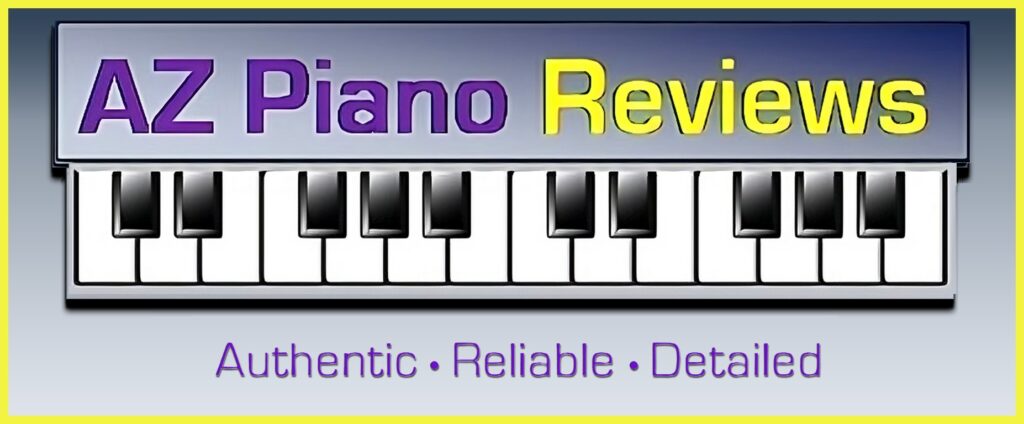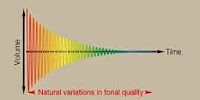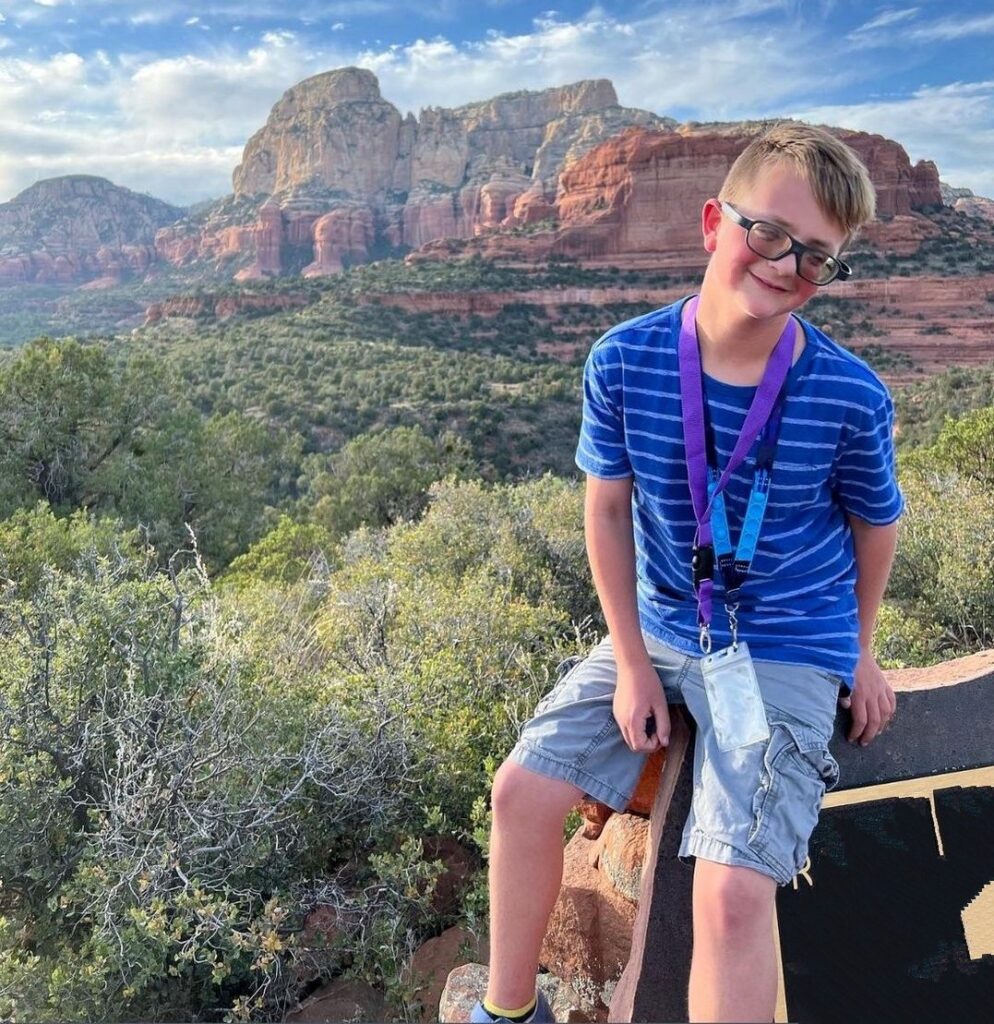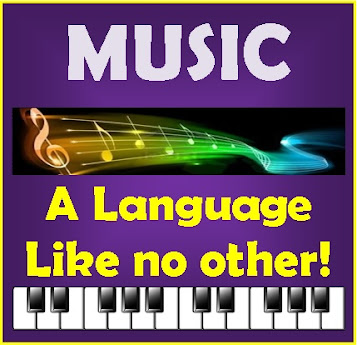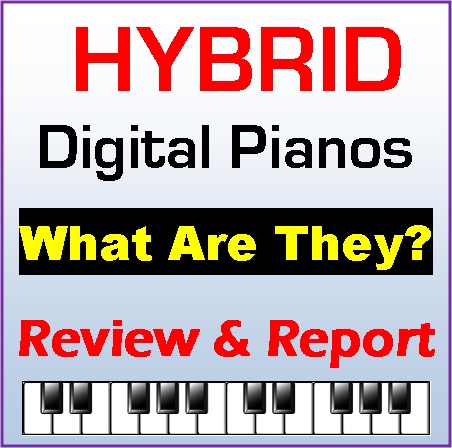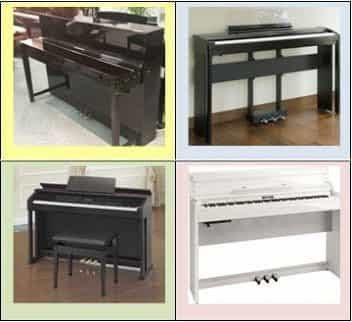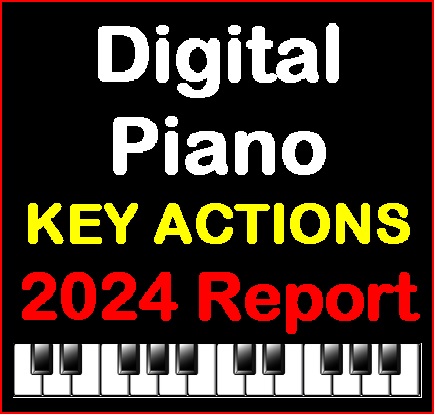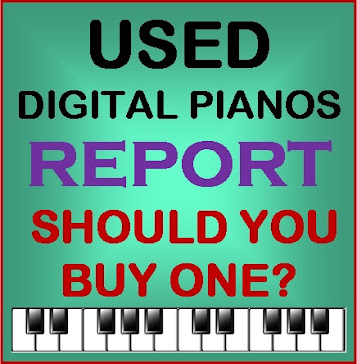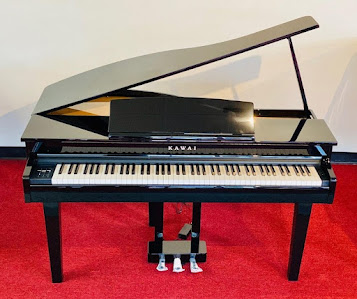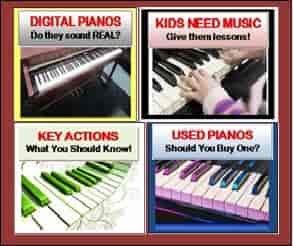🎹 UPDATED REVIEW – August 1, 2019 – Artesia AG28 & AG40 digital micro & mini grand pianos – NOT Recommended –
These 2 models are discontinued and have been replaced by the AG30 & AG50. Please go to the following link to read my review of these 2 newer models: Artesia AG30/AG50 Review – Previous review of AG28 & AG40 – I have reviewed the Artesia digital piano brand before and have not recommended any of their models in the past and these models in this review are unfortunately no exception. Although the AG28 2’8″ depth micro grand ($1599US regular price at Costco) and the AG40 4′ mini grand ($2799US regular discount price) offer a boat load of digital features and great looks, you cannot judge a book by its cover as the old saying goes.
I think it is important to know that the Artesia AG28 & AG40 are do have many digital “bells & whistle” features which are fun to use and play with including the drum patterns, interactive auto arrangement chords, playalong songs, MIDI recording features, and additional instrument sounds. It has lots of connectivity to many external devices including iPad, computer, and external speaker systems as well as headphone jacks for private practice, so all of that is good. The AG28/AG40 have a number of sound EFX and editing features to adjust the sound and other functions so there is plenty to keep the average person busy. However, getting a piano is really all about getting a realistic and satisfying piano playing experience and this is where the Artesia AG28 falls short.
First and foremost I want to talk about the AG28/AG40 key action. In past models, the Artesia brand, which is built by a Chinese digital piano manufacturer, was using a key action that was noisy, clunky, and played very poorly in my opinion. However, on the newer AG28 & AG40, it would appear as if Artesia has substituted a better key action made by the Fatar key action company in Italy.
| AG28 micro grand |
When playing the keys a bit harder with more force, the keys hit the bottom of the keybed and make a noticeable knocking noise, and this is a problem with a few other key actions as well, including all the Chinese built key actions I have ever played. The keys on this Fatar key action also come back up a little too quickly and take a bit more effort to push down when playing lightly or softly (as compared to a real piano) which is referred to as static key touch weight. So is this new key action bad?…not really. But is it good?…the answer would be no, it is not good. It is just OK and certainly better than on previous models of Artesia pianos, however for a lot less money you can get a regular upright style Roland, Yamaha, Kawai, or Casio digital piano that would have much more advanced and upgraded key actions than the ones in the current model Artesia digital pianos.

The 2nd most important aspect of any piano (digital or acoustic) is the piano sound itself. With regard to the Artesia AG28/AG40 pianos, the so-called “stereo” piano sound is noticeably bad. The acoustic piano in these pianos sound nothing like a real piano. First of all, the piano sound in most good digital pianos is recorded in stereo to reproduce the movement of natural acoustic piano tone from the left hand up through the right hand. Although the Artesia brand claims the AG28/AG40 piano tone is recorded in stereo, if it is, it’s the poorest sounding stereo I have ever heard because it sounds just like basic mono! Stereo piano tone moves from left to right or right to left as you go up & down on the keys. This piano sound does not move at all, it just comes out in the middle, like mono. Clearly this is a cheap piano sample of a real piano. Not only that, the piano sound itself is very thin and “toy-like” as compared to a real piano and most other good new digital pianos. I was quite surprised how cheap the piano tone sounded as compared to better sounding low priced digital pianos and keyboards. The sound is simply not beautiful or even near being beautiful, especially as compared to a real piano. It is true that there
are some piano shoppers who have little or no piano playing experience and may not recognize a poor quality acoustic piano sound when they hear it. So for those people the Artesia AG28/AG40 may actually sound good to them. But in reality, it’s a poor recreation of what a real piano sounds like and doesn’t come close to some of the good Casio, Yamaha, Kawai, and Roland digital pianos for under $1000. There are only two acoustic type pianos sounds on the AG28/AG40 grand piano and bright piano.
The 3rd most important aspect of the piano is its ability to smoothly and accurately control the dynamic range and tonal color of the piano sound. What I mean by the that is the differences between soft and loud, mellow and bright, and everything in between. When playing easily/softly on a piano keys you should be able to get a really quiet sound out of the piano and when you press the keys harder and harder you should get a smooth transition of volume going up to very loud. This key playing action will also cause the character of the piano sound to go from more mellow when playing the keys lightly to
brighter and sharper when playing the keys hard and more aggressively. When a person is a beginner these variable aspects of piano sound response is not so important because beginners don’t get into that right away.
| AG28 micro grand |
The next and final fundamental aspect of playing a piano is the three pedals down below the piano. On the Arteisa AG28/AG40, these pedals look good and feel good and do as intended, but with a couple of exceptions. One notable exception is that when you press up and down on the right sustain pedal when playing a song on the AG28 micro grand, which is what is used 95% of time as opposed to the other two pedals, the entire piano shakes and moves. This situation is very distracting when playing the piano, and as far as I am concerned, not acceptable. This piano cabinet shaking and moving back & forth when pressing on the pedal is due to the construction and design of the piano legs. The legs are tapered from top to bottom and there seems to be little physical support (of the legs) in this way to keep the piano from moving and wiggling like it does. The larger AG40 doesn’t have that same problem because the piano is larger and the legs are larger and they have casters on the bottom of the legs.
OK so now that I have pointed out the most important features in what to look for when shopping for a good piano, I want to talk about the other less important features that many digital pianos offer which can add to the overall enjoyment of playing a digital piano . The Artesia pianos have 136 built-in instruments sounds (including the 2 piano sounds) such as strings, brass, woodwinds, guitars, organs, electric pianos, harpsichord, bells, synthesizer, etc. There is a split & layer function to take any two instrument sounds and mix them together of play them on either side of the piano keyboard simultaneously. These pianos also offer 99 interactive rhythm and
accompaniment arrangements such as rock, jazz, Big Band, swing, march, waltz, country, Latin, etc, a built-in metronome for timing, editing controls for special EFX, autochord features for playing 1-finger or 3 finger left hand chords, a 16 track MIDI song recorder and player which can play General MIDI files from a USB flash drive, a
auto-harmonizer for playing single notes and getting the entire chord, and the list goes on. There is even a digital function to turn the 88 notes (bass and treble clef) into two 44-note keyboards that play the identical octaves. In other words, two people can play at the same time and play the exact same notes in the same octave, even though one person is on the bass note side and the other playing the treble note side. This function is called the duet feature and is useful for teacher-student or any two people who want to play together and learn the same song. So when it comes to “fun features,” there is really no shortage of those things on these pianos. But is that really the most important thing when considering a new digital piano purchase…I don’t think so.
Although the polyphony chip in this piano is only 64-note polyphony, it does a pretty good job of handling beginner through intermediate level players as long as you aren’t playing big chords, large arpeggios, or layering two sounds together. The non-piano instrument sounds and interactive auto accompaniments are OK with some sounding pretty good and others not so good. This is typical in pianos like these but they are overall fun to play. However the instrument sounds and auto accompaniments in many other digital pianos under $1000 are much superior to these Artesia pianos, but those pianos are not in a polished ebony upright style or mini grand piano case like the Artesia’s. It’s a trade off for either getting a much better musical instrument with substantially more music realism as compared to real instruments, or a better looking piano with much lower quality instrument sounds and accompaniment backgrounds which gives you much less musical realism.
The buttons across the control panel are easy to see and the LCD user display screen lights up nicely and reads out info to tell you what functions you are using when you press a button. So as control panels go, it’s a good one and there is a new data entry knob that allows for easier access of the many features in these pianos, so that is a good thing. However I found that the buttons themselves are quite hard to push and not that comfortable to use. If the button switches were of higher quality, they would likely have been easier to press and go from one to the next. The material and surfaces of the buttons and control panel are fine, it’s just the resistance of the buttons to pushing on them that bother me.
The Artesia pianos are definitely attractive pianos, they have loud built-in speaker systems with 120 watts of power and 6 speakers, and as I mentioned earlier, the pianos do a lot of things and have many enjoyable functions. These pianos also have very good connectivity to external devices including blue-tooth access to iPad for audio streaming, USB connectivity to computer, audio output connectivity to external speaker system, audio inputs to connect other devices to the piano like a microphone along with independent volume control, and MIDI
to connect to other MIDI devices. There are headphone jacks for private practice and listening
and a USB flash drive input to access songs to play on the piano for playalong and/or singalong.
Artesia even includes a USB flashdrive with pre-loaded songs to play on the piano, which is nice. However, most of the preloaded songs are not very good, you probably would never have heard of many of them, and they are just free songs that mean very little to most people. However there are some familiar songs that most people would recognize including Christmas songs, some classical tunes, and some pop music. It’s hard to complain when the music is included for free:).
So here’s the bottom line: if you want a digital piano that looks great (they also come with a very nice matching padded benches) and can be fun to play, the Artesia pianos are a good choice. The AG40 has upgraded cabinet design and hardware over the AG28, but it also quite a bit more money too. However, if you want to be sure you get a digital piano which allows you to have a decent quality piano playing experience when it comes to reproducing what a real piano is actually like, then the Artesia pianos are definitely not going to do that as far as I am concerned…and I don’t think I am being too picky about that.
 |
| AG40 mini grand |
It is because of the fundamentals of what a piano should play and sound like at basic levels that I do not recommend these new Artesia pianos. If you want a pretty toy then there are certainly other things you can buy when it comes to that. If you want a good piano 1st and the toys second, then look elsewhere because you won’t find it here. Oh, and one more thing; the Artesia company piano warranty is only 1 year parts & labor according to their company info, which is a small warranty time compared to the name brands which offer 3 year long warranties. In my opinion a 1 year warranty is not nearly enough time especially for these types of digital pianos. It is difficult to say how long these pianos will last when it comes to build quality so you also need to take all of that into consideration before you purchase anything. Your real shopping questions on these Artesia pianos need to be; “do I want a pretty shiny black cabinet and a fun musical toy as my
primary reason for buying a digital mini grand piano, or am I more concerned about it actually playing and sounding more like a real piano?
If you want more info on new digital pianos and LOWER PRICES than internet discounts, please email me at tim@azpianowholesale.com or call direct at 602-571-1864.
